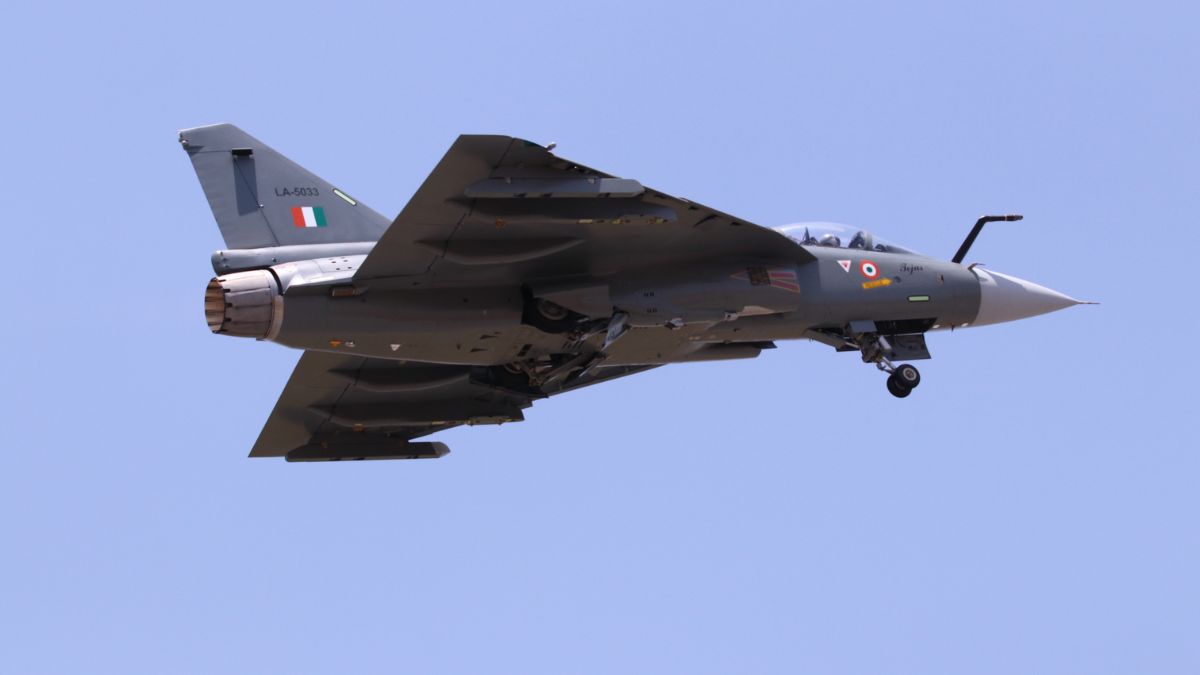India is retiring its MiG-21 fighter jets after 62 years of service. These aircraft are being replaced by the Tejas Light Combat Aircraft (LCA) Mark-1A.
The Indian Air Force (IAF) has decided to phase out MiG-21s by September this year and replace them with the indigenously developed newer Tejas fighter jets. Currently, there are only two MiG-21 squadrons – 36 warplanes – in operation, both at the Nal Air Base in Rajasthan.
Here’s a look at the Tejas fighter jets replacing India’s longest-serving fighter plane.
MiG-21s to fly no more
First inducted in 1963, MiG-21 is a single-engine, single-seater multi-role fighter/ground attack aircraft.
Designed by the Mikoyan-Gurevich Design Bureau (OKB) of the erstwhile Soviet Union, the fighter jet bolstered the Indian Air Force over the years.
It was deployed during the 1965 Indo-Pakistan War, 1999 Kargil War and the 1971 Bangladesh Liberation War.
MiG-21 was also used during the 2019 Balakot air strikes on terror camps in Pakistan. The then Wing Commander Abhinandan Varthaman, piloting a MiG-21, had shot down a F-16 fighter jet of Pakistan during an aerial combat.
While MiG-21 was the IAF’s backbone, it came to be infamously known as “widow-maker” or the “flying coffin” due to several crashes over its decades of service.
About 500 MiG-21s have crashed in the last 60 years, resulting in the death of 170 pilots, as per government data. Over 20 aircraft have crashed since 2010.
Now, the IAF will phase out its ageing MiG-21s that remain in service. “Indian Air Force to phase out the MiG-21 fighter jet by September this year. The squadrons operating the aircraft are currently in Nal air base in Rajasthan. The LCA Mark 1A aircraft would be replacing the MiG-21s in the IAF,” a defence official was quoted as saying by ANI.
Tejas Mk-1A to boost India’s defence
The Tejas Light Combat Aircraft Mk-1A is an indigenous 4.5 generation, all-weather and multi-role combat aircraft.
Developed by Hindustan Aeronautics Limited (HAL), these fighter jets are designed for deployment in high-threat aerial environments. The Tejas Mk-1A has several upgrades over the Tejas Mk-1 version, including Israel EL/M-2025 AESA Radar, Advanced Electronic Warfare Suite with a jammer, and Beyond Visual Range (BVR) capabilities.
A homemade digital fly-by-wire flight control computer has been integrated into the Tejas jet. These fly-by-wire systems replace mechanical flight controls in an aircraft with an electronic interface.
“In a significant development towards Tejas Mk1A programme, the digital fly-by-wire flight control computer (DFCC) was integrated into prototype LSP7 and successfully flown on February 19,” the defence ministry said earlier.
The combat aircraft has about nine hard points to carry different types of weapons, including the Israeli-built Derby missiles and the indigenous ASTRA missile.
“The Tejas Mk1A will have an advanced electronic RADAR, warfare and communication systems, additional combat capability and improved maintenance features,” according to HAL.
The aircraft is capable of air defence, maritime reconnaissance, and strike missions.
In February 2021, the Defence Ministry signed a Rs 48,000 crore deal with HAL for procuring 83 Tejas Mk-1A jets for the IAF. It said it is also in the process of procuring 97 more of these warplanes for around Rs 67,000 crore.
However, the delay in the delivery of Tejas MK-1A has frustrated the air force. Even Air Chief Marshal AP Singh flagged the issue.
In August 2021, HAL placed an order with America’s GE Aerospace for 99 F404 engines worth Rs 5,375 crore to power the Tejas Mk-1A. The first of these jet engines finally delivered to HAL in April, after a delay of over a year.
The US company is running behind schedule to provide the engines for the Tejas fighter jets by two years. “We are working with our partner HAL and suppliers to resolve constraints and deliver F404-IN20 engines for the LCA Mk1 programme,” GE Aerospace said, as per Financial Express.
Twelve Tejas Mk-1A are expected to be rolled out this year. The US firm will deliver 10 engines by the end of 2025.
“It takes about a month to integrate the engines and do the tests. The process first involves building the fuselage, then getting the lobing and piping done, followed by combining the landing gear,” a government official told Indian Express.
“After integrating the engines, the ground runs, including the high-speed runs, are carried out for all thorough checks,” the official added.
The IAF is counting on the advanced Tejas jets as the number of its fighter squadrons has plunged to 31 from an official sanctioned strength of 42.
With inputs from agencies


)

)
)
)
)
)
)
)
)



